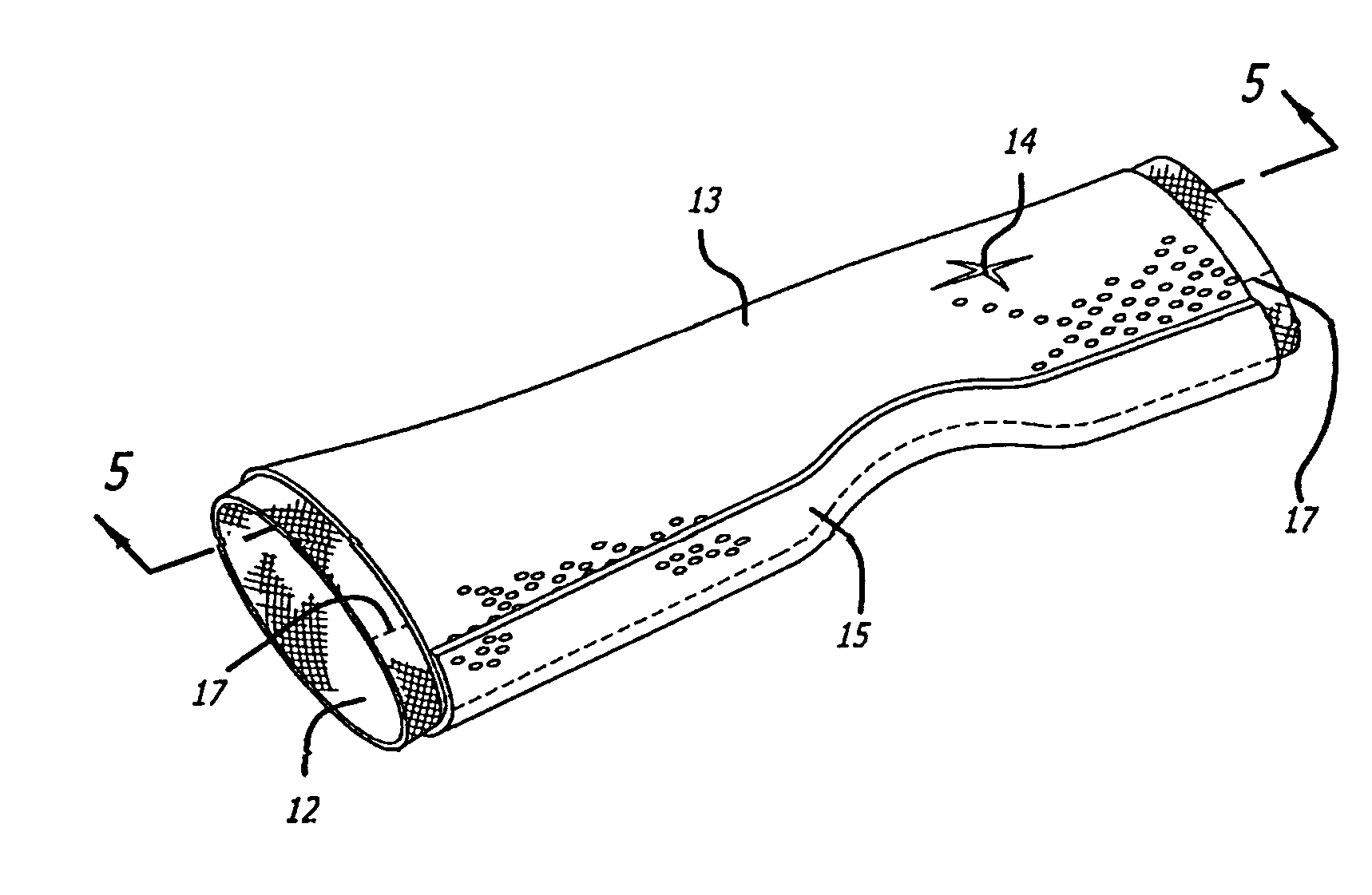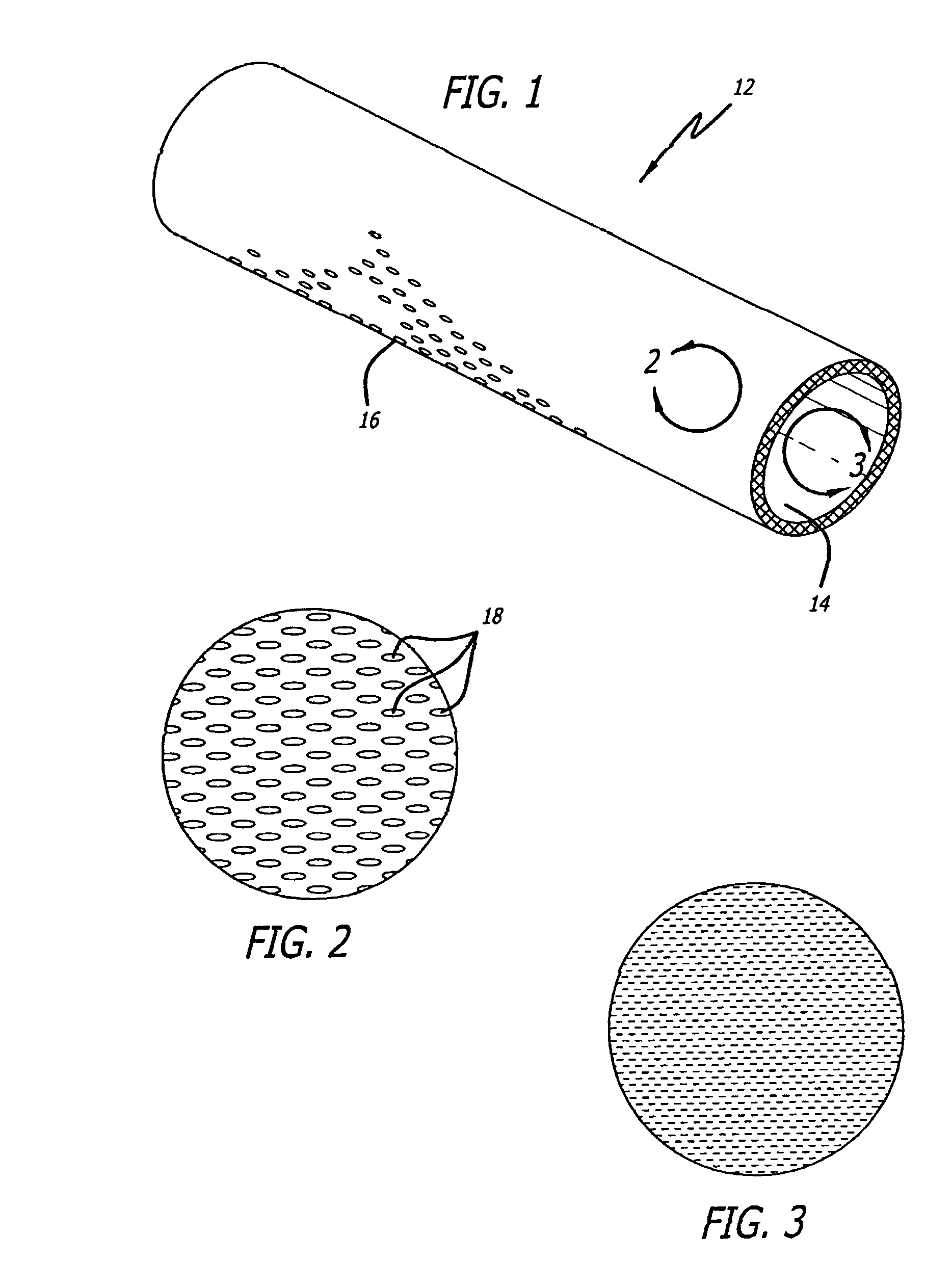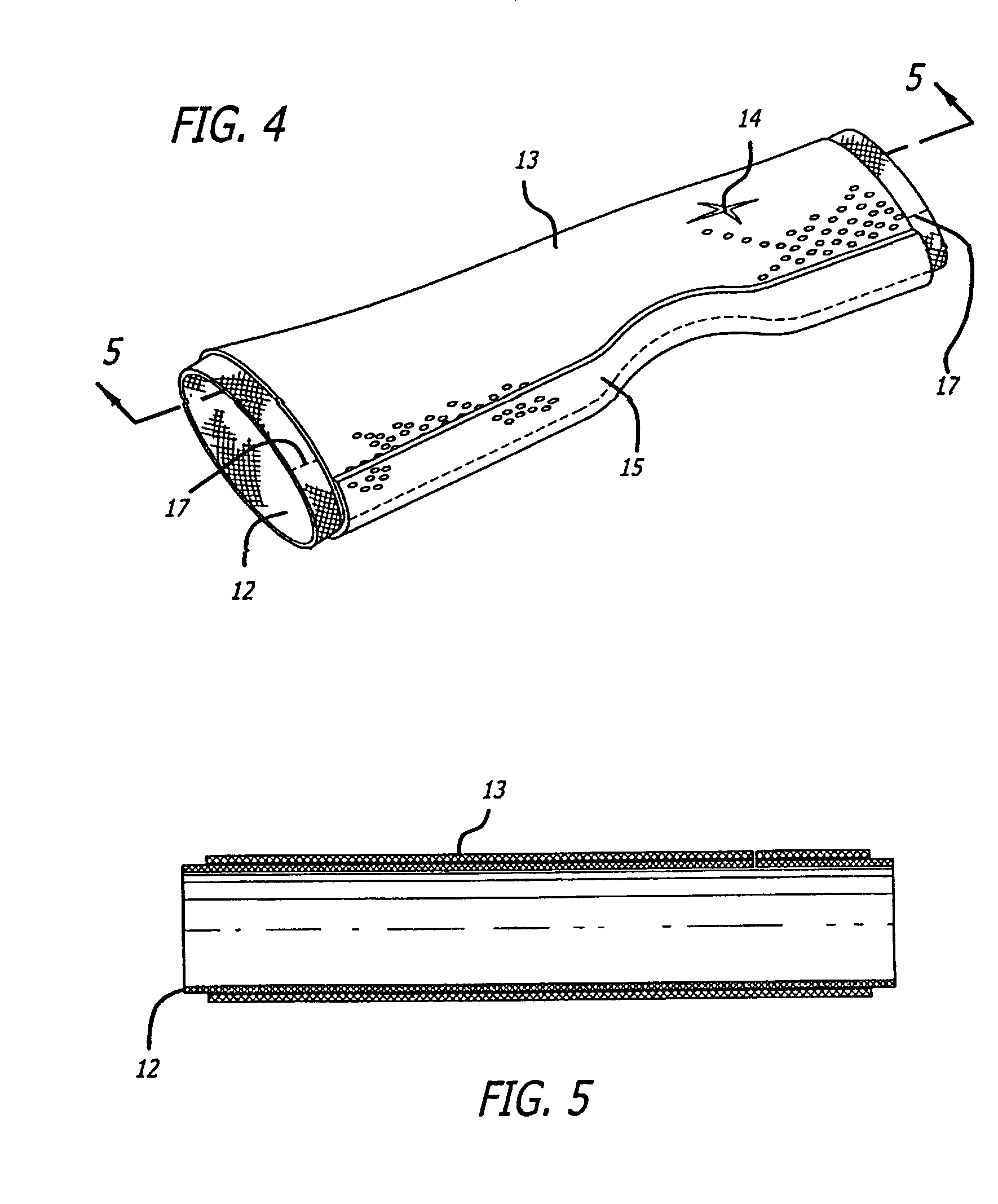Cast assembly with breathable double knit type padding
a double-knit type, cast technology, applied in the field of orthopaedic casts or supports, can solve the problems of increasing production costs, increasing production costs, and affecting the effect of casts, so as to reduce the air circulation, prolong the application time, and increase the water retention
- Summary
- Abstract
- Description
- Claims
- Application Information
AI Technical Summary
Benefits of technology
Problems solved by technology
Method used
Image
Examples
Embodiment Construction
[0032]Referring more particularly to the drawings, FIG. 1 shows a tube 12 of double knit type material, which is intended for use as padding underneath a cast or support. As mentioned above, the double knit material involves an inner layer such as that shown in FIG. 3 and at area 14 of FIG. 1 of a finely knit or woven structure to provide a smooth surface next to the skin providing additional comfort for the patient. Incidentally, another method resulting in a smooth comfortable surface on the inner face of the padding material is to laminate a single layer of fabric to one surface of the double knit material. The outer surface of the double knit material, for example at area 16 and as shown enlarged in FIG. 2, is of a relatively coarse woven or knit structure and may have openings such as those shown at 18 in FIG. 2, to permit improved air circulation through the outer portion of the padding 12. In one sample product, the openings 18 are approximately ⅛-inch long and are 1 / 16-inch ...
PUM
 Login to View More
Login to View More Abstract
Description
Claims
Application Information
 Login to View More
Login to View More - R&D
- Intellectual Property
- Life Sciences
- Materials
- Tech Scout
- Unparalleled Data Quality
- Higher Quality Content
- 60% Fewer Hallucinations
Browse by: Latest US Patents, China's latest patents, Technical Efficacy Thesaurus, Application Domain, Technology Topic, Popular Technical Reports.
© 2025 PatSnap. All rights reserved.Legal|Privacy policy|Modern Slavery Act Transparency Statement|Sitemap|About US| Contact US: help@patsnap.com



